Saddlebags
Division
Saddlebags
Division

The saddlebags division is called that because the two demarcated areas, connected by a band, actually do resemble saddlebags on a horse somewhat, as in the illustration above. I’ve discussed this division in depth on the following pages; to find what you’re looking for these are the links:
The division is a fairly common one, and pysanky of this sort can be found in just about every part of Ukraine. Binyashevsky gives many examples in his works. On the previous page we saw pysanky in which both the dividing lines and the “strap” across the top and bottom were single, thin lines.
In the pysanky below, the “strap” is wide, and filled either with color or with decorative elements, while the dividing lines are a single line, like these Binyashevsky pysanky from the Kharkiv and Kyiv regions, and Volyn:



Similar wide “straps” can be seen in these pysanky from the Kyiv (2) and Chernihiv regions:






In other sakvy type pysanky, both the “strap” and the dividing lines wide bands, and filled either with color or with decorative elements, as in these Binyashevsky pysanky from the Kyiv and Poltava regions, and a pysanka from Volyn:



This Volynian pysanka is an example of sakvy where both the strap and dividing bands are double lines; on the Poltava pysanka the dividing line is a double line. Both of these combinations are fairly commonly found in folk pysanky.
Diasporan pysanky can get even fancier, as you can in the two pictured below (form Elyjiw). Both the straps and the dividing bands are filled with designs:



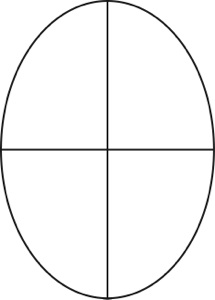

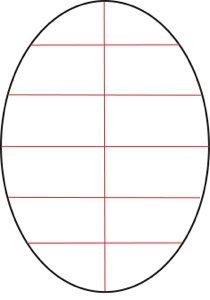
A B
If the design calls for the “strap” to be a simple line, place two sets of dots as shown in (C). Connect them with pencil, using straight lines, so that you now have lines on the top and bottom of the egg shifted a quarter turn (D).



C D
Next, connect the ends of these lines with straight lines (E). This will you a simple sakvy division, if you wax in the red lines (F).



E F
If the design calls for the “strap” to be wide, draw lines as shown in (G). These will be two lines paralleling the dividing line at a constant distance. Do this on top, then shift a quarter turn and repeat on the bottom of the egg. Next, connect the ends of these lines with straight lines (H).
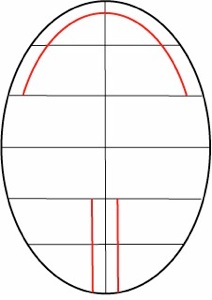

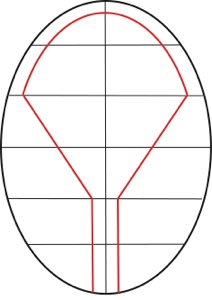
G H
The result is this classic sakvy division with a wide “strap” (I).
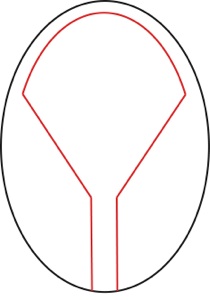


I J
Back to Main Writing Pysanky page
Back to Main Pysankarstvo page
Note: All photos, illustrations and text © Luba Petrusha 2007-2010. All Rights Reserved. Reproduction prohibited without expressed consent. May contact via e-mail (link below).
Wide «Сакви» (Sakvy)































